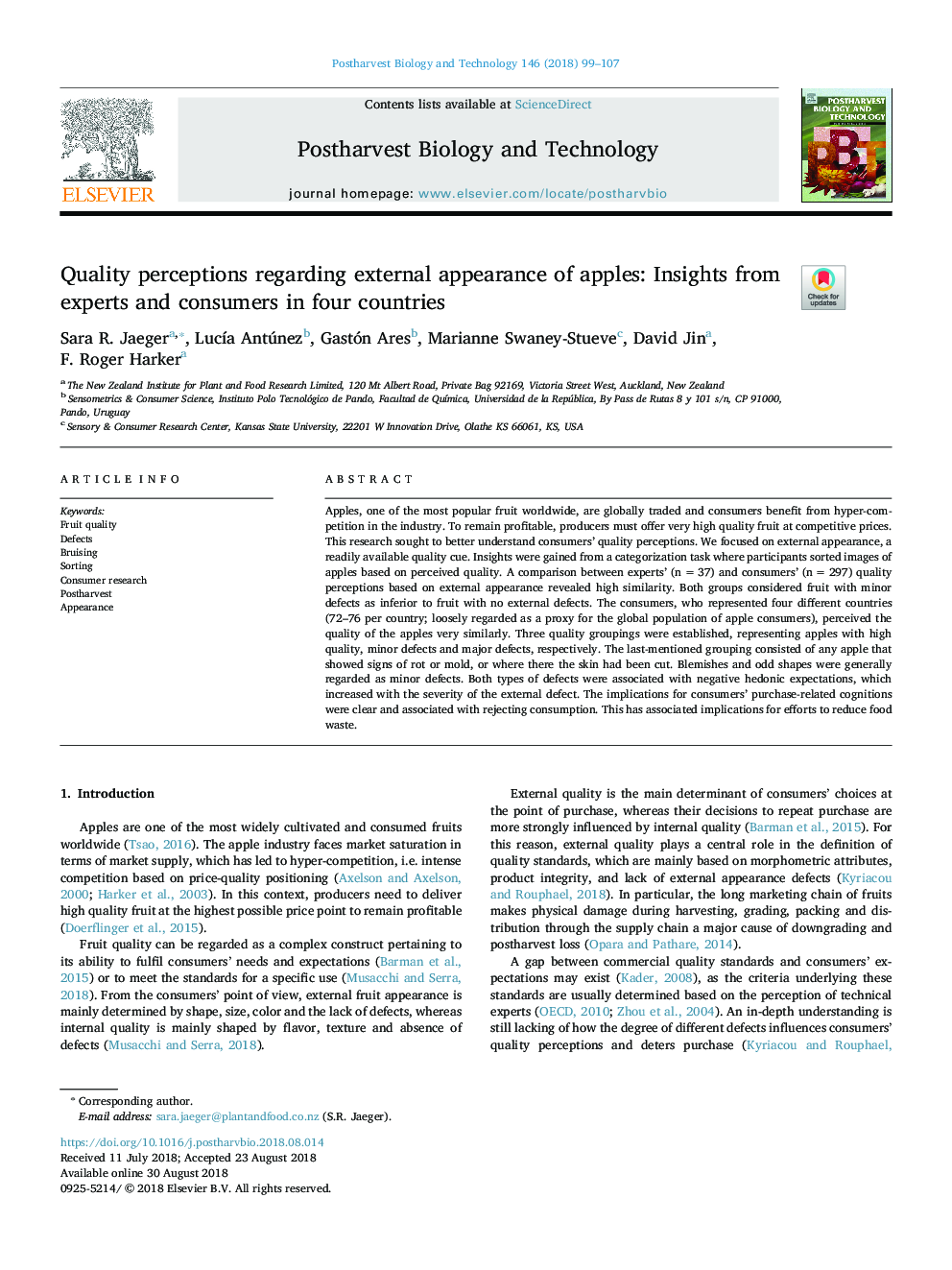| Article ID | Journal | Published Year | Pages | File Type |
|---|---|---|---|---|
| 10117103 | Postharvest Biology and Technology | 2018 | 9 Pages |
Abstract
Apples, one of the most popular fruit worldwide, are globally traded and consumers benefit from hyper-competition in the industry. To remain profitable, producers must offer very high quality fruit at competitive prices. This research sought to better understand consumers' quality perceptions. We focused on external appearance, a readily available quality cue. Insights were gained from a categorization task where participants sorted images of apples based on perceived quality. A comparison between experts' (nâ=â37) and consumers' (nâ=â297) quality perceptions based on external appearance revealed high similarity. Both groups considered fruit with minor defects as inferior to fruit with no external defects. The consumers, who represented four different countries (72-76 per country; loosely regarded as a proxy for the global population of apple consumers), perceived the quality of the apples very similarly. Three quality groupings were established, representing apples with high quality, minor defects and major defects, respectively. The last-mentioned grouping consisted of any apple that showed signs of rot or mold, or where there the skin had been cut. Blemishes and odd shapes were generally regarded as minor defects. Both types of defects were associated with negative hedonic expectations, which increased with the severity of the external defect. The implications for consumers' purchase-related cognitions were clear and associated with rejecting consumption. This has associated implications for efforts to reduce food waste.
Related Topics
Life Sciences
Agricultural and Biological Sciences
Agronomy and Crop Science
Authors
Sara R. Jaeger, LucÃa Antúnez, Gastón Ares, Marianne Swaney-Stueve, David Jin, F. Roger Harker,
